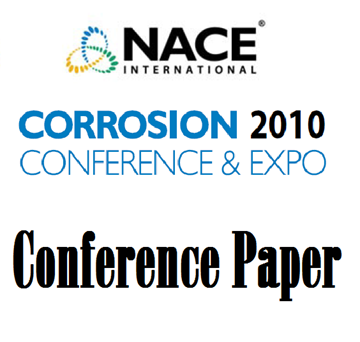Search
10326 Effect of Corrosion Inhibitor Active Components on Corrosion Inhibition in a Sweet Environment
Also Purchased
10332 Sour and Sweet Corrosion of Carbon Steel: General or Pitting or Localized or All of the Above?
Product Number:
51300-10332-SG
ISBN:
10332 2010 CP
Publication Date:
2010
$20.00
08345 Effect of Corrosion Inhibitor Active Components on the Growth of the Iron Carbonate Scale Under CO2 Conditions
Product Number:
51300-08345-SG
ISBN:
08345 2008 CP
Publication Date:
2008
$20.00
09569 Further Investigation on the Effect of Corrosion Inhibitor Actives on the Formation of Iron Carbonate on Carbon Steel
Product Number:
51300-09569-SG
ISBN:
09569 2009 CP
Publication Date:
2009
$20.00




